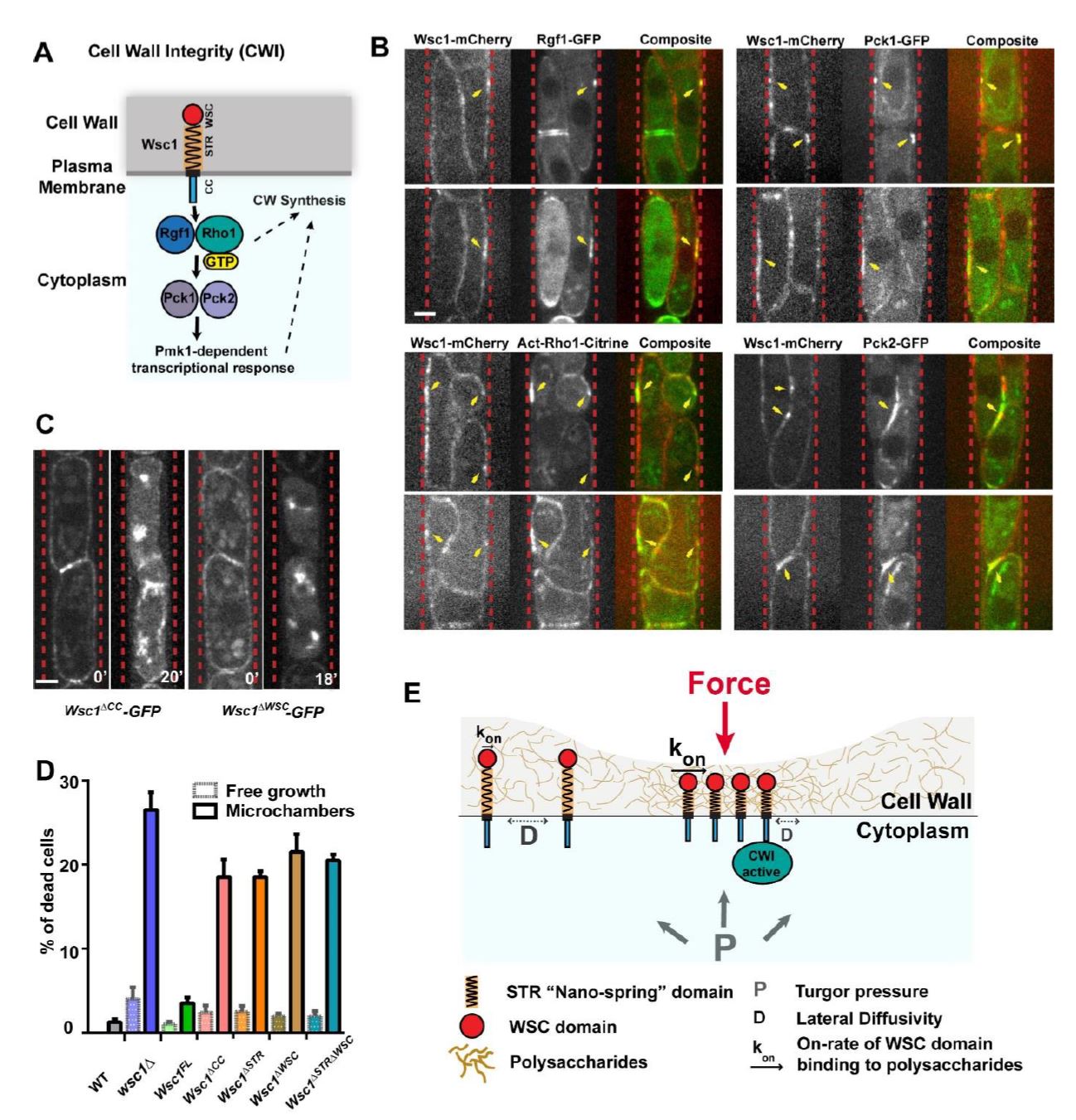[bioRxiv] Detection of Surface Forces by a Cell Wall Mechanosensor
Yuree Leel 2021-03-27l 조회수 801
DETECTION OF SURFACE FORCES BY A CELL WALL MECHANOSENSOR
[ABSTRACT
Surface receptors of animal cells, such as integrins, promote mechanosensation by forming local clusters as signaling hubs that transduce tensile forces. Walled cells of plants and fungi also feature surface sensors, with long extracellular domains embedded in their cell wall (CW), thought to detect CW injuries and promote repair. How these sensors probe surface forces remains unknown. By studying the conserved CW sensor Wsc1 in fission yeast, we uncovered the formation of micrometer-sized clusters at sites of local force application onto the CW. These clusters form within minutes of CW compression, in dose-dependence with mechanical stress and dissolve upon stress relaxation. Our data support that Wsc1 senses CW mechanical stress and accumulates to local sites of enhanced stress through its CW-associated extracellular WSC domain, independently of canonical polarity, trafficking and downstream CW regulatory pathways. Wsc1 may represent an autonomous module to detect and transduce local surface forces onto the CW.



Proposed model for Wsc1 mechanosensation.
Wsc1 diffuses in the membrane and CW planes, and interacts with CW polysaccharides through its WSC domain. Upon force application, the CW is locally compressed, promoting the densification of CW sugars. This may enhance the binding kinetics of WSC domains to sugars, slowing down lateral diffusivity, and leading to cluster formation. In parallel, at sites of CW compression, the STR domain becomes compressed and triggers downstream CWI activation through the cytoplasmic C-ter.